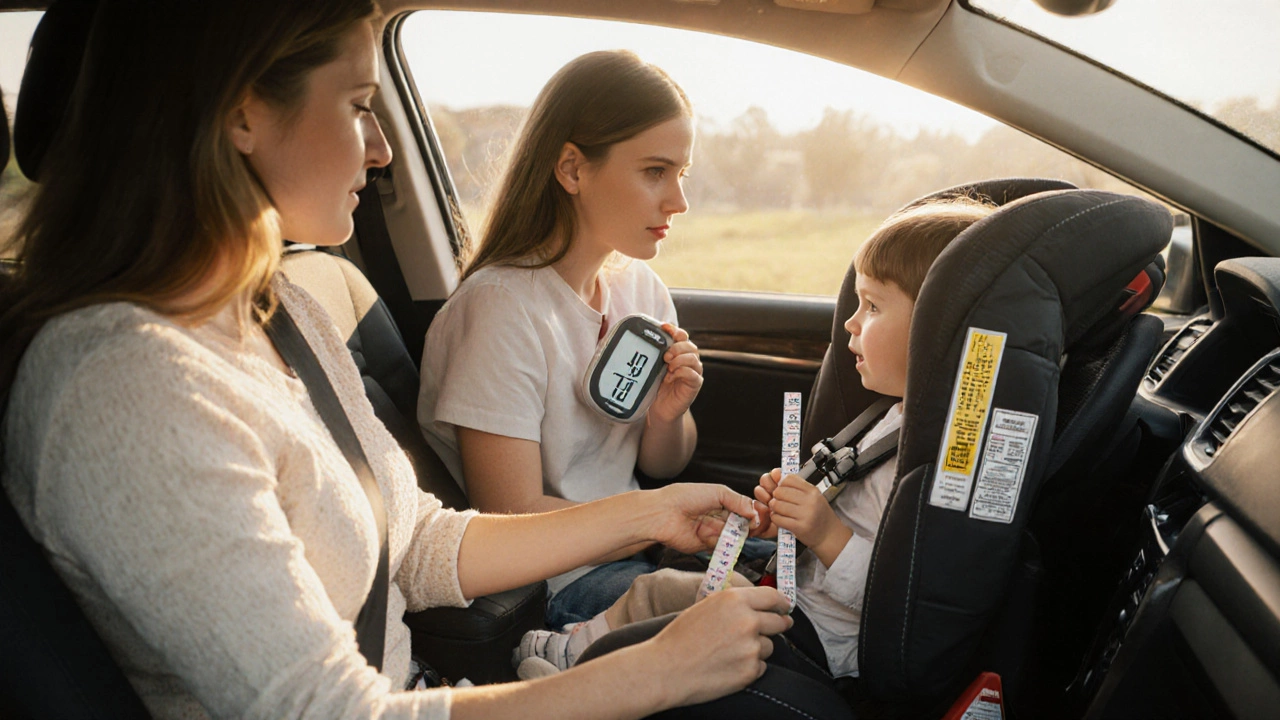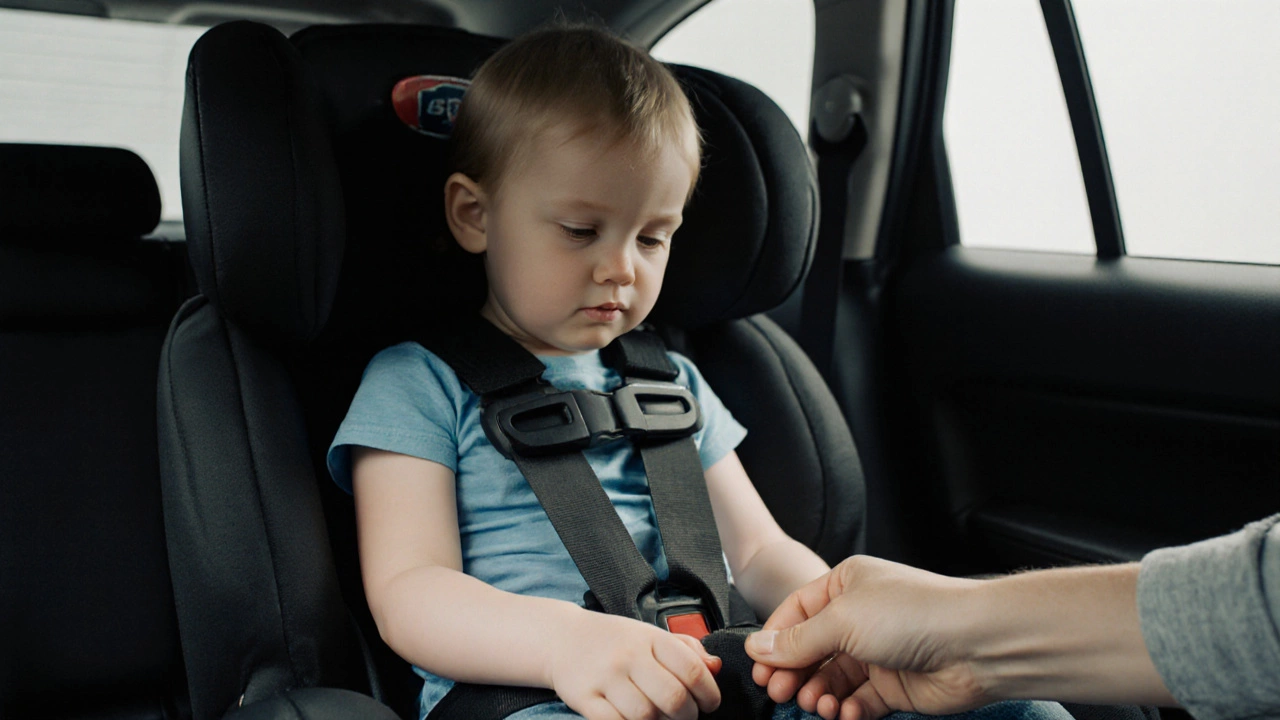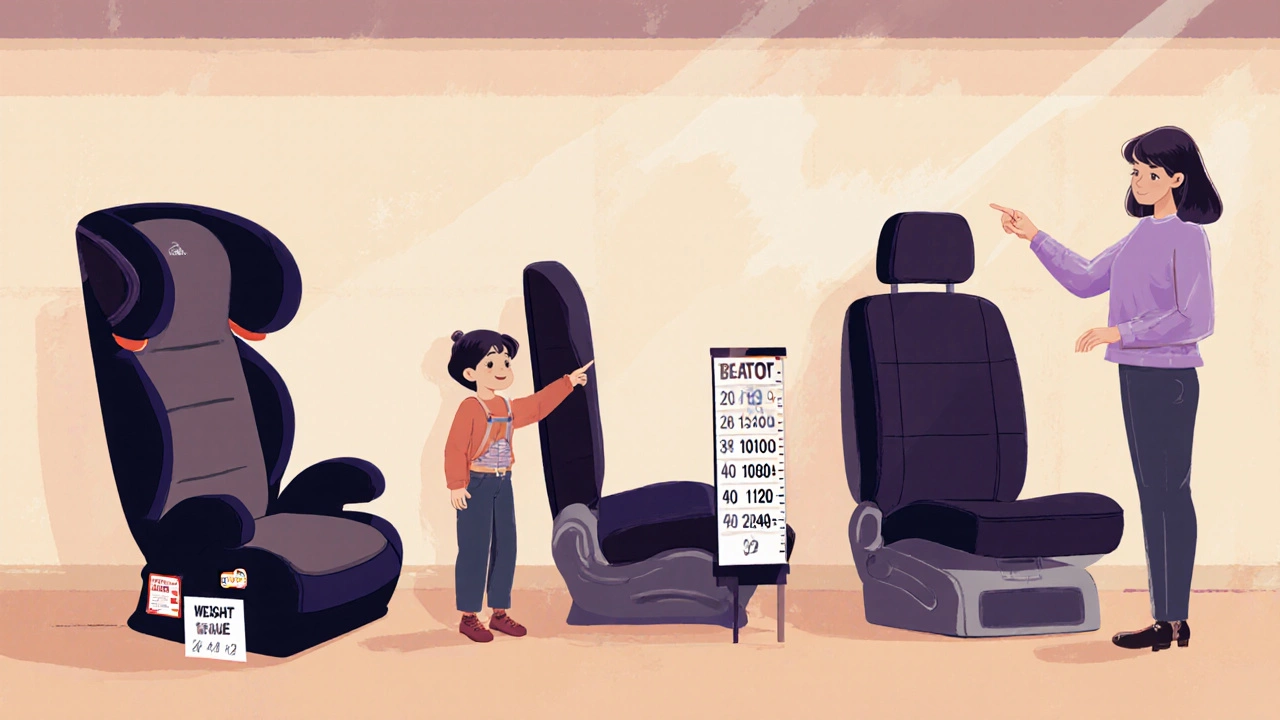When Should Kids Move to a Booster Seat? Weight Guidelines Explained

Booster Seat Transition Calculator
Note: This tool provides guidance based on general safety standards. Always ensure the seat belt fits properly and consider consulting with a certified child passenger safety technician.
Parents often wonder, “At what point does my child stop using a forward‑facing car seat and jump into a booster?” The answer isn’t a single number-it blends weight, height, age, and how the seat fits the vehicle’s seat belt. Below we break down the exact booster seat weight thresholds, safety science, and a step‑by‑step plan to make the switch confidently.
Quick Takeaways
- Most U.S. states require a booster seat until the child is at least 40lb (18kg) and 40in (102cm) tall.
- The American Academy of Pediatrics (AAP) recommends staying in a booster until the vehicle’s lap‑and‑shoulder belt truly fits the child’s shoulder and hips.
- Age is a rough guide-most kids transition between 4 and 8 years old, but size matters more than birthday.
- Test the seatbelt fit: the lap belt should sit low across the upper thighs, not the stomach; the shoulder strap should cross the middle of the clavicle.
- When in doubt, keep the booster seat a few months longer; the safety benefit outweighs the inconvenience.
Understanding Weight Guidelines
Booster seat is a vehicle safety device designed to position the vehicle’s seat belt correctly on a child’s body once the child outgrows a forward‑facing seat. Federal Motor Vehicle Safety Standard (FMVSS) 213 sets the minimum weight for a child to move out of a forward‑facing seat with a 5‑point harness: 40lb (18kg). Many manufacturers, however, list a higher upper limit-often 65lb (29kg) or 80lb (36kg)-to maximize the seat’s protective envelope.
The key is the child’s weight falling within the range where the forward‑facing seat no longer secures the child properly, but the booster seat’s belt positioning has not yet been achieved. Most states adopt the 40‑lb floor as the legal minimum, but they also allow a higher threshold if the child’s height meets the seat‑belt fit criteria.
Height and Age Factors
Height plays an equally important role because a child can be heavy yet still too short for the vehicle’s belt to sit correctly. The AAP recommends a minimum height of 40in (102cm) before using a booster. Some states set the height requirement at 43in (109cm). The reason is simple: the lap belt must lie over the upper thighs, and the shoulder belt must cross the middle of the chest.
Age is a secondary factor. Most children reach the 40‑lb and 40‑in milestones between 4 and 8 years old. However, premature growth spurts can shift that timeline forward, while slower‑growing kids may need the booster longer.

How to Test the Seat‑Belt Fit
Even if the child meets the weight and height numbers, you still need to verify belt fit. Follow this quick test:
- Seat the child in the booster with the vehicle’s lap‑and‑shoulder belt.
- Pull the lap belt snugly. It should rest on the upper thighs, not the abdomen.
- Check the shoulder strap. It should cross the middle of the clavicle and fall close to the neck, not the neck or the armpit.
- Ask the child to sit upright with knees bent at the edge of the seat. If they can do this without slouching, the fit is likely correct.
If any part of the belt rides too high or too low, keep the booster seat until the child grows enough to achieve the proper positioning.
Step‑by‑Step Transition Plan
Switching from a forward‑facing seat to a booster isn’t a single click; it’s a process. Here’s a practical roadmap:
- Check the label. Find the manufacturer’s weight and height limits on the forward‑facing seat. If the child is at or above both, it’s time to move.
- Measure the child. Use a tape measure for height and a digital scale for weight. Record the numbers.
- Perform the belt‑fit test. Follow the steps above in your car with a booster seat.
- Install the booster. Follow the vehicle’s manual and the booster’s instructions. Ensure the seat is snug and the seat belt threads correctly.
- Do a “wiggle test.” The child should not be able to slide out of the seat or lift their hips off the seat with a slight push.
- Plan a road‑trip trial. Take a short drive and re‑check the belt fit. If everything feels secure, you’re good to go.
Keep the forward‑facing seat as a backup for long trips or rides with high‑speed highways until you’re fully confident in the booster’s performance.
Common Mistakes to Avoid
- Relying solely on age. A 7‑year‑old who is 38in tall still needs a booster.
- Using a booster that’s too small. Some “compact” boosters have lower weight limits; always verify the label.
- Forgetting the shoulder‑belt placement. The belt crossing the neck can cause serious injury in a crash.
- Skipping the wiggle test. A seat that moves can dislodge the belt during a collision.
- Leaving the child in the back seat for a “quick” trip. Even short rides pose a risk if the seat isn’t properly fitted.

Weight vs. Height: Comparison Table
| Criteria | Forward‑Facing Seat (5‑point harness) | Booster Seat (seat‑belt only) |
|---|---|---|
| Minimum Weight | 40lb (18kg) | 40lb (18kg) - varies by state |
| Maximum Weight | 65-80lb (29-36kg) depending on model | No upper limit, but seat belt must fit correctly |
| Minimum Height | 35in (89cm) - typical | 40in (102cm) - AAP recommendation |
| Typical Age Range | 2-5years | 4-12years (varies with size) |
Legal Landscape in the United States (2025)
The National Highway Traffic Safety Administration (NHTSA) provides model regulations, while each state enforces its own limits. As of 2025, 48 states require a booster until a child reaches at least 40lb and 40in tall. Two states-California and New York-set the height at 43in. No state mandates a specific upper weight limit for boosters; the focus stays on proper belt fit.
The American Academy of Pediatrics (AAP) adds a professional endorsement: stay in a booster until the lap belt sits low on the thighs and the shoulder belt crosses the middle of the chest, usually around 4'9" (145cm) for most children.
Choosing the Right Booster for Your Child
Not all boosters are created equal. Here are three common types and their typical weight ranges:
- High‑back booster. Offers head support; good for cars with low seat backs. Usually fits 30-100lb.
- Backless booster. Compact; best when the vehicle seat has a high back that provides head support. Fits 40-120lb.
- Combination seat‑booster. Starts as a forward‑facing seat and converts to a booster, covering 40-120lb.
Check the product’s weight limit label and match it with your child’s current measurements.
Frequently Asked Questions
What is the exact weight a child can stop using a forward‑facing seat?
Federal law sets the minimum at 40lb (18kg). Many manufacturers allow up to 65 or 80lb, but you must also meet the height and belt‑fit criteria before switching.
Can a child use a booster before they turn 4 years old?
Only if they meet both the weight (≥40lb) and height (≥40in) thresholds and the vehicle’s seat belt fits correctly. Most children aren’t that large at age 3, so a forward‑facing seat is usually required.
Do I need a high‑back booster if my car has a low seat back?
Yes. A high‑back booster provides head and neck support that a low vehicle seat cannot, improving safety in a crash.
How can I tell if the lap belt is positioned correctly?
The lap belt should lie flat across the upper thighs, not the stomach. When you pull it snug, you should feel it against the thigh bones.
What if my child outgrows the booster’s weight limit?
Most boosters are designed for children up to 120lb. If your child exceeds that, transition to using the vehicle’s seat belt alone, ensuring the belt fits as described.
By checking weight, height, and belt fit, you can move your child to a booster seat with confidence and keep everyone safe on the road.